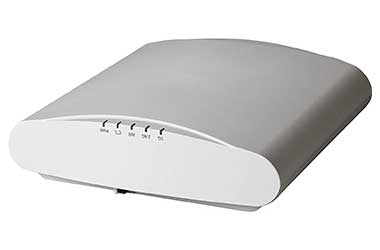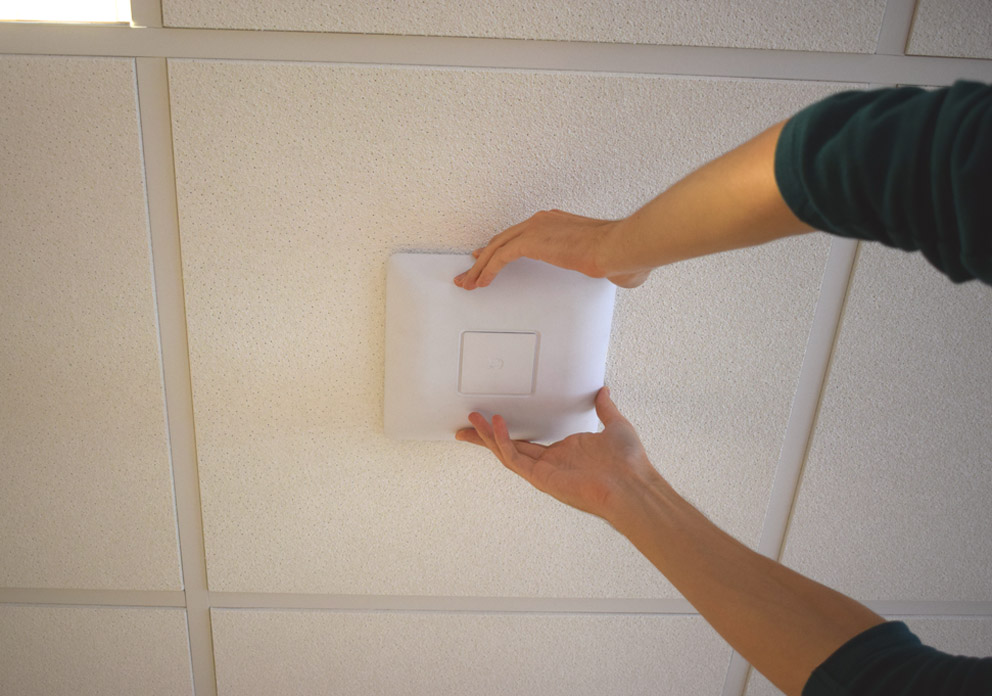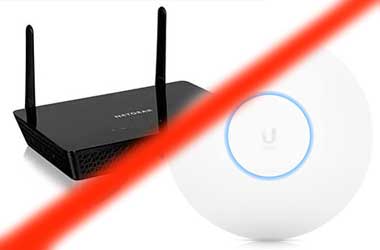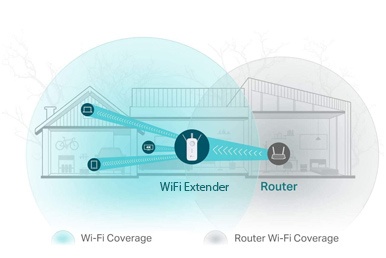
- Create an Adequate Cabling Plan for Your Network Infrastructure
- Select the Appropriate Equipment for a Wide Area Wireless Installation
- Utilize a Unified Management System for Your Wide Area WiFi Solution
- Be Strategic About Placing Your Equipment
- Configure Your Equipment for Maximum Efficiency
- Use Point-to-Point Bridges to Share an Internet Connection Between Two or More Areas
In today’s climate, having a wide area WiFi solution is paramount. How many times per day do you or your employees use WiFi? If we were to take a quick guess we would say, it’s probably every second of the day.
WiFi is such a helpful technology that gives capabilities that we almost couldn’t live without. The thing is, it also requires accurate knowledge. It also demands proper execution to power both wired and wireless network connections simultaneously.
If you’re planning to cover a warehouse or a large office building with wide area WiFi, you have to start by understanding exactly:
- Where you’ll need it
- Why you’ll need it
This will give you a good idea of how much it will cost.
It’s easy to think you can just pick up some long-range WiFi hotspot equipment at Best Buy. Then hope that will cover acres or even miles of land with a solid wide area WiFi connection.
Unfortunately, this isn’t the world we live in today, and that ideal situation simply doesn’t exist. If you want to distribute WiFi over a large warehouse or event production studio it won’t work without proper planning. You’ll need many different pieces of equipment as well as some technical prowess to get the job done right.
What You Want to Avoid When Covering Wide Area With WiFi
We’ll start by emphasizing a few things you typically want to avoid when planning a wide area WiFi solution. Certain setups can work well in small offices or residential environments but won’t fly in a commercial setting.
Double Nat Networks
A double nat network is essentially when you connect one router to another in hopes of extending your signal further. It will allow devices connected to those routers to connect to the internet. But it’s basically creating another network to do so. It does not actually extend your network.
This can create issues when performing tasks such as:
- Connecting to a virtual private network (VPN)
- Making conference calls
- Other types of advanced network configuration
You can even use the same password and network name for each router. The fact is they will still create multiple different networks.
One device that is connected to one router will not be able to connect with another device using a different router. Even though they are seemingly connected to the same network. This may seem a great idea in theory. It will simply not be an adequate way to cover a wide area with WiFi.
Mesh WiFi Networks
This type of network operates by deploying a web of wireless access points across a single network. It does this without running an ethernet cable between each access point.
Essentially you are bouncing the WiFi signal from one access point to another. It’s an attempt to extend the network wirelessly across multiple access points.
This method can work fine in residential environments. It also works well depending on the coverage required in that area (We recommend the Amazon eero Pro mesh WiFi system if you use this method in your home).
However, it’s not going to be ideal for a commercial environment. You can lose up to 50% of your speed for each hop in this network. Even in residential environments, if you’re streaming video content or online gaming, you’re connection is going to take a hit.
Wireless Extenders/Repeaters
Contrary to popular belief, these devices actually create a new network instead of extending your existing one. They rely on a central antenna to connect devices to the network. This makes for an inconvenient mashup of doublet nat and mesh WiFi networks.
This can be great if you’re only trying to connect one device to your network. For example, something that’s just a little too far from the gateway in a residential environment.
For large areas, it’s simply not going to cut it. When multiple devices fight for coverage with an extender, it can cause a large amount of lag on your network.
The methods we discussed above can seem attractive due to their affordable price options. They can be easy to set up.
This is because these are only adequate for residential environments with limited devices. We’re going to need something more heavy duty for a large area.
Tips for Planning a Wide Area WiFi Solution
If you’re going to plan a WiFi solution over a wide area, it’s important to get it right. It’s also important that you build an infrastructure that will last as your business evolves with technology. Let’s look at how to cover a large area with WiFi the right way.
1. Create an Adequate Cabling Plan for Your Network Infrastructure
It can get very expensive to acquire enterprise-level WiFi equipment. It’s vital that you spend what is necessary to get the network set up right the first time.
You may decide later to run a new cable system to accommodate future upgrades. However, that can double or even triple in price compared to the first time you ran it. You will inevitably run into challenges, including drilling, trenching, cutting through walls, and more.
It is very time-consuming to run cables. This process can affect your employee’s ability to conduct business effectively. Just imagine there are people drilling holes in the wall next door 6 hours out of the day.
Get it done when you are moving into a new property or building a new building. It is imperative that you have this infrastructure in mind as part of the construction or remodeling process.
This may even require running multiple cables to places where they are not immediately needed. If you think you will need it later, it’s better to go ahead and install it now.
It’s better to have it and not need it than to need it and not have it. As we mentioned above, you may be multiplying the prices of your network infrastructure later on.
Plan for the Future of Your Business
It’s common practice for multiunit facilities to run multiple cables for VoIP, hardline, and other equipment. You never know if you’ll those in the future.
It may seem like a good idea to cut corners for financial reasons or to keep things looking nice around the building. However, you must prepare for growth in your company as well as keep up with technology as a whole.
Your ethernet cables may not reach certain areas without a significant drop in speed. In this case, you may need to opt for fiber optic instead. Fiber will be much more reliable over distances of up to 1000 meters. And it will withstand the test of time.
There are going to be other factors that come with installing fiber optic cables and equipment. In this case, it’s crucial to hire a wide area WiFi service provider.
They’ll be able to handle this type of setup and have the expertise to maintain it. There are so many factors that come with running a wide-area solution. You may have to get creative with a variety of different methods to cover your entire area.
2. Select the Appropriate Equipment for a Wide Area Wireless Installation
It’s going to be important that you invest in enterprise-level equipment for this type of installation. We can’t stress this enough.
It will not be enough to use consumer-level gear for a commercial operation. They do not have the strength, configuration capabilities, or tech support to accommodate a wide area WiFi solution.
Don’t forget about firewalls, network interface controllers, switches, wireless bridges, and everything else. These are a big part of what you need to have a reliable, fast, and secure wide area WiFi network.
You don’t want to get stuck with WiFi equipment that will limit what you need to run your business effectively. Made By WiFi absolutely shines in this department.
We not only make sure everything is installed correctly. We also make sure that every single piece of your equipment integrates seamlessly.
Always go with Gigabit switches (10/100/1000) to support high speed throughput on your network. Although 100 Mbps may be enough for right now, as technology evolves you will want to upgrade
Having the capacity to do that will save you many thousands of dollars in the long run. Note that you will need equipment with SFP ports if you want to run fiber optic cable.
As we spoke about before, knowing why and where you will need your wide area WiFi network to be active is going to be important here. Some routers have limits to the number of devices that can connect to it simultaneously. Plan for a router that can handle thousands of users, if your business requires it.
3. Utilize a Unified Management System for Your Wide Area WiFi Solution
Cloud controllers are going to be your best bet to create the most up to date unified management system possible. There are a ton of enterprise-grade network equipment developers such as Cisco Meraki, Aerohive, Ubiquiti, and Ruckus.
These manufacturers are phasing out their physical controllers in favor of cloud platforms. This is a good move on their part. With cloud controllers, you get much better analytics. You also get the ability to have centralized control over multiple locations at a time.
They will be much easier to update than physical controllers and other older types of enterprise-grade WiFi equipment. You won’t require a tech to come out on-site.
You’ll save a ton of money by being able to conduct updates over the phone or through remote access. You also won’t have to worry about replacing an expensive unit if it fails.
There are a many manufacturers that offer switches that are able to use the same interface as its access points. This isn’t the most flexible option for a wide area WiFi solution but is definitely much more convenient.
It also may not be as reliable. If you stay organized and keep your credentials handy to give support when needed, it’s doable.
You can also partner with a managed wide area WiFi provider to make this setup a breeze. Look out for gear from Ruckus’ ICX (Ruckus Brocade ICX 7150) and Aerohive’s SR series that are ideal for this configuration.
4. Be Strategic About Placing Your Equipment
It’s very important to plan out how and where you’re going to place your enterprise level access points. You’ll want to support optimal wide area WiFi coverage.
You don’t want strong connection in one area, then dropouts in places where large video conferences or data transfers occur. For the most part, you want strong, smooth coverage across the entire area. This will take some planning on your part (Check out of blog post packed with tips for setting up your WiFi Network)
Conduct an Active Site Survey
Outsourcing a company to conduct an active site survey is the best way to nail your placement perfectly. A team that specializes in this area has done this multiple different times in a variety of environments.
These professionals have nailed wide area placement down to a science. They have also spent many years perfecting their craft to get the job done effectively and affordably every time.
They can give you some direction with your plan to help you make the most of your installation. It’s a great idea to take on this endeavor with a solid:
- Bill of materials
- In-depth cabling plan
- Budget that will be required to make this work.
Put Switches Near the Internet Demarcation Point (IDP)
Your IDP is the central place where your ISP connects to your building via your organization’s private network. It’s important to have your core equipment (typically located in a server room) close to this point. This is going to be a secure area. It must be kept cool and dust free because your mainframe will be located in this area.
There may also be a need to place intermediate distribution frame (IDF) switches in key places. These are used to extend your network to support your large area WiFi solution.
This will help bridge the gap between any larger stretch of ethernet cables needed to keep the juice flowing. Keep in mind that your IDF switches will also need to be placed in a secure area. Make sure it’s similar to the station next to your IDP.
5. Configure Your Equipment for Maximum Efficiency
Create a smaller signal size for a large building with hundreds of rooms, multiple floors and many access points. Your employees will need the ability to move between access points with grace and dignity.
You can’t afford the connection to drop at any point. That could be the difference between making a deal and a client moving on to another company.
It’s also less convenient for your team to be confined to one access point all day. When they can move around and collaborate they can run your business more efficiently.
However, if you’re covering a large outdoor area, it may make more sense to increase the signal cell size. This way each point can cover a large distance on its own. This is ideal for situations where an event production company has stationary places for controlling lights, pyrotechnics, and surveillance.
It may be challenging to figure out what configuration you should use for your unique situation. Only you and your budget can determine if you can figure it out with trial and error.
We have numerous tips for WiFi configuration on our blog that can help you get started. You’ll want to contact professionals who can help you figure out the best setup for your area.
6. Use Point-to-Point Bridges to Share an Internet Connection Between Two or More Areas
Point-to-Point bridges allow you to effectively extend your internet signal. They do not have WiFi connectivity, but they are the easiest way you can extend your network between two points.
You may not want to invest in additional ethernet or fiber wire to extend your network. This way you can dodge the labor costs needed to run more cable and keep it aesthetically pleasing.
These bridges have the capability to hold a strong signal for over 10 miles with minimal to no lag (We recommend the Ubiquiti NSM5 for maximum coverage).
You’ll want to place these on the outside of your building. Just make sure to account for an ethernet cable that is required to power each one.
They come pre-built with shields to withstand the elements. Don’t worry about any additional casings. Unless you’d like to conceal them or help them blend into the look of your outer premises.
You’ll just want to make sure that they are in line of sight of each other at all times. Make sure there is no possibility of them being interrupted.
Try to place them away from where trees may grow or if your facility allows for them. Or place them high enough to where this would not be an issue.
Final Thoughts about wide area WiFi
It can be a daunting task to undertake covering a wide area with WiFi. Without the proper knowledge, a variety of factors can leave your organization without WiFi for extended periods of time. We hoped we could shed some light on some things you should avoid when installing this type of infrastructure.
Bad WiFi takes no investment to set up, but good wide area WiFi takes right planning and the right expertise. To ensure you have a rock-solid wide area WiFi network, contact our wireless specialists today and get a free consultation.







